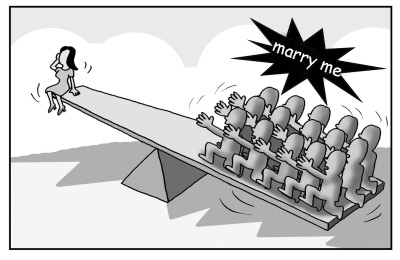(Ecns.cn)--In over one decade, tens of millions of young Chinese men will not be able to find a partner, revealed the data from China's sixth national census released by the National Bureau of Statistics (NBS) in April.
The alarming figures showed an increasingly imbalanced sex ratio at birth on the Chinese mainland, Liu Qian, deputy health minister, said at a news conference in August.
The gender difference of newborn babies between 2000 and 2010 was 118 males to 110 females. A traditional preference for sons and the abuse of medical technology such as illegal sex-selective abortion and other factors has led to the situation, pointed out Liu.
Flourishing men vs. missing women
According to Men and Women in Chinese Society!Facts and Data (2007), compiled by the NBS, China's gender gap in newborn babies has been widening since the 1980s.
The number of males for every 100 females has been rising consistently every decade from 108 in 1982, to 111 in 1990, and 116 in 2000.
Nicholas Eberstadt, a demographer at the American Enterprise Institute for Public Policy Research, pointed out that currently the sex ratio of boys to girls between 0 to 4 years of age is 123 to 100. In some provinces, including Jiangxi, Guangdong, Hainan, and Anhui, there are 30% more males in this age group than females.
It is not surprising that China has become a country hit hard by "missing women," a term coined by Nobel Prize laureate Dr. Amartya Sen to describe the large number of women in the world who are literally not alive due to family neglect and discrimination, reported the China Business News.
According to a research report, Estimates of Missing Women in China in the 20th Century, by Li Shuzhuo, director of the Institute for Population and Development Studies at the Xi'an Jiaotong University, the number of missing Chinese women reached its peak in 1940, and remained large before the 1960s. Though the figure dropped a little during the 1960s and early 1970s, it started increasing again in the late 1970s.
In the past, many newborn girls were drowned soon after birth due to poor abortion technology and the deeply rooted preference for males who could carry on the family line, said the China Business News.
Li added that since the 1980s, the strict one-child policy forced families to take sex-selective abortions in a bid to have a son, which resulted in the constant increase of male-biased sex ratios.
There were 9.2 million women missing between 1980 and 2000, calculated Li, adding that by 2050, there will be 30 million more men aged 20-50 than women.


















